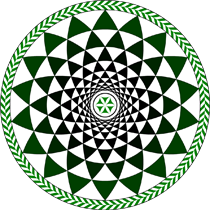Speaker
Aleksandra Deptuch
(Marian Smoluchowski Institute of Physics, Jagiellonian University, Cracow, Poland)
Description
`Liquid crystalline compounds belonging to 3FmHPhF homologous series (m = 2, 4, 5, 6, 7) have been studied by complementary methods such as differential scanning calorimetry (DSC), polarizing optical microscopy (POM), electrooptic methods, frequency domain dielectric spectroscopy (FDDS) and X-ray diffraction (XRD). All studied compounds exhibit ferroelectric smectic C$^\ast$ and antiferroelectric smectic C$_A^\ast$ phases, therefore they are interesting from application point of view in liquid crystal displays (LCDs). Additionally, paraelectric smectic A phase is present in homologues with m = 5, 6, 7 [1].`
`DSC measurements with different heating/cooling rates were performed to obtain temperatures and enthalpy changes related to the phase transitions. Electrooptic methods based on POM allowed to measure the temperature dependence of spontaneous polarization, switching time and optical tilt angle, while FDDS measurements gave information about the relaxation times and activation energies of the processes existing in the smectic phases. Relaxation processes in the SmA, SmC$^\ast$ and SmC$_A^\ast$ phases were interpreted based on the results obtained by fitting the Cole-Cole equation to the experimental data.`
`XRD patterns were used to determine the values of structural parameters characterizing the studied compounds, namely the average distance between the molecules and the correlation length of the short-range order within the smectic layers, the layer thickness and the value of geometrical tilt angle (the latter incorporates the results of molecular modelling in HyperChem). The maximum values of an optical tilt angle in all compounds are close to 45$^\circ$ which means that they are orthoconic antiferroelectric liquid crystals (OAFLCs) – very perspective materials for display applications. The discrepancy between optical and geometrical tilt angle has been explained.`
`Two lower homologues (m = 2, 4) crystallize during cooling while compounds with m = 5, 6, 7 undergo a glass transition and their cold crystallization is visible during heating. The Vogel-Fulcher-Tammann equation has been fitted to FDDS results of α dielectric relaxation times related to a glass transition and a fragility parameter was calculated from FDDS and DSC results. The connection between short range order in smectic layers and the glass transition is discussed as well.`
References
[1] M. Żurowska, R. Dąbrowski, J. Dziaduszek, K. Garbat, M. Filipowicz, M. Tykarska, W. Rejmer, K. Czupryński, A. Spadło, N. Bennis, J. M. Otón, Influence of alkoxy chain length and fluorosubstitution on mesogenic and spectral properties of high tilted antiferroelectric esters, `$\textit{J. Mater. Chem.}$`, 2011, `$\textbf{21}$`, 2144-2153, DOI: 10.1039/c0jm02015j.
Primary author
Aleksandra Deptuch
(Marian Smoluchowski Institute of Physics, Jagiellonian University, Cracow, Poland)
Co-authors
Anna Drzewicz
(Institute of Chemistry, Military University of Technology, Warsaw, Poland)
Damian Pociecha
(Faculty of Chemistry, University of Warsaw, Warsaw, Poland)
Jakub Fitas
(Marian Smoluchowski Institute of Physics, Jagiellonian University, Cracow, Poland)
Marzena Tykarska
(Institute of Chemistry, Military University of Technology, Warsaw, Poland)
Monika Marzec
(Marian Smoluchowski Institute of Physics, Jagiellonian University, Cracow, Poland)
Patryk Fryń
(Marian Smoluchowski Institute of Physics, Jagiellonian University, Cracow, Poland)
Teresa Jaworska-Gołąb
(Marian Smoluchowski Institute of Physics, Jagiellonian University, Cracow, Poland)

